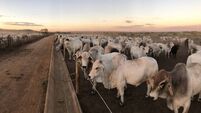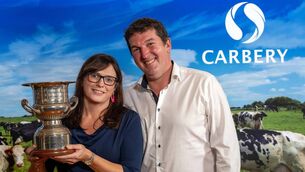Pedigree move will boost cash
John O'Dea of the IHFA has advised farmers they can add at least 200 per head by upgrading to pedigree. "If your herd is taken out by a breakdown of BSE, TB, or brucellosis, the animal with a pedigree on a piece of paper is worth up to 250 more than the non-pedigree animal", he said. "If the cow has a pedigree status, she is worth that much more than a cow with the same milk yield, cell count and butterfat. The Department or Agriculture monitor pedigree sales to determine what they should be paying."
Now that procedures for registering pedigree animals have been simplified, they should no longer present difficulty for any farmer. But the farmer is required to officially milk record, and animals must be sired by a registered bull. He said that there has been a big increase in the number of herds upgrading to pedigree over the past three years.
Meanwhile, cost cutting and sales maximisation was how six Tipperary dairy farms, monitored by Teagasc, increased annual profitability by 5,416, on average.
The suppliers to Tipperary and Thurles Co-ops worked closely with Teagasc Advisor Jane Kavanagh.
Eleven other monitor groups are run by Teagasc and milk processors, all aiming to improve milk composition and cut costs, to achieve greater dairy farm profits.
According to Jane Kavanagh "it involves close partnership between Teagasc advisers and researchers with farmers and management of the two co-ops. It is focused on transferring the best technology through monitor farms, discussion groups, farm walks and seminars".
Protein levels increased by 0.08% on the monitor farms, through better management and breeding. This added value to the milk sales, without risk of going over quota.
The six discussion group members have also achieved a "common cost" of 11.2 cent per litre, compared to a national average production cost of 15.8 cent per litre for all Teagasc dairy farm clients, and a considerably higher average for all dairy farms in the country. Their main target is to increase protein, by 0.1% by the end of 2004, while reversing the decline in herd fertility.













